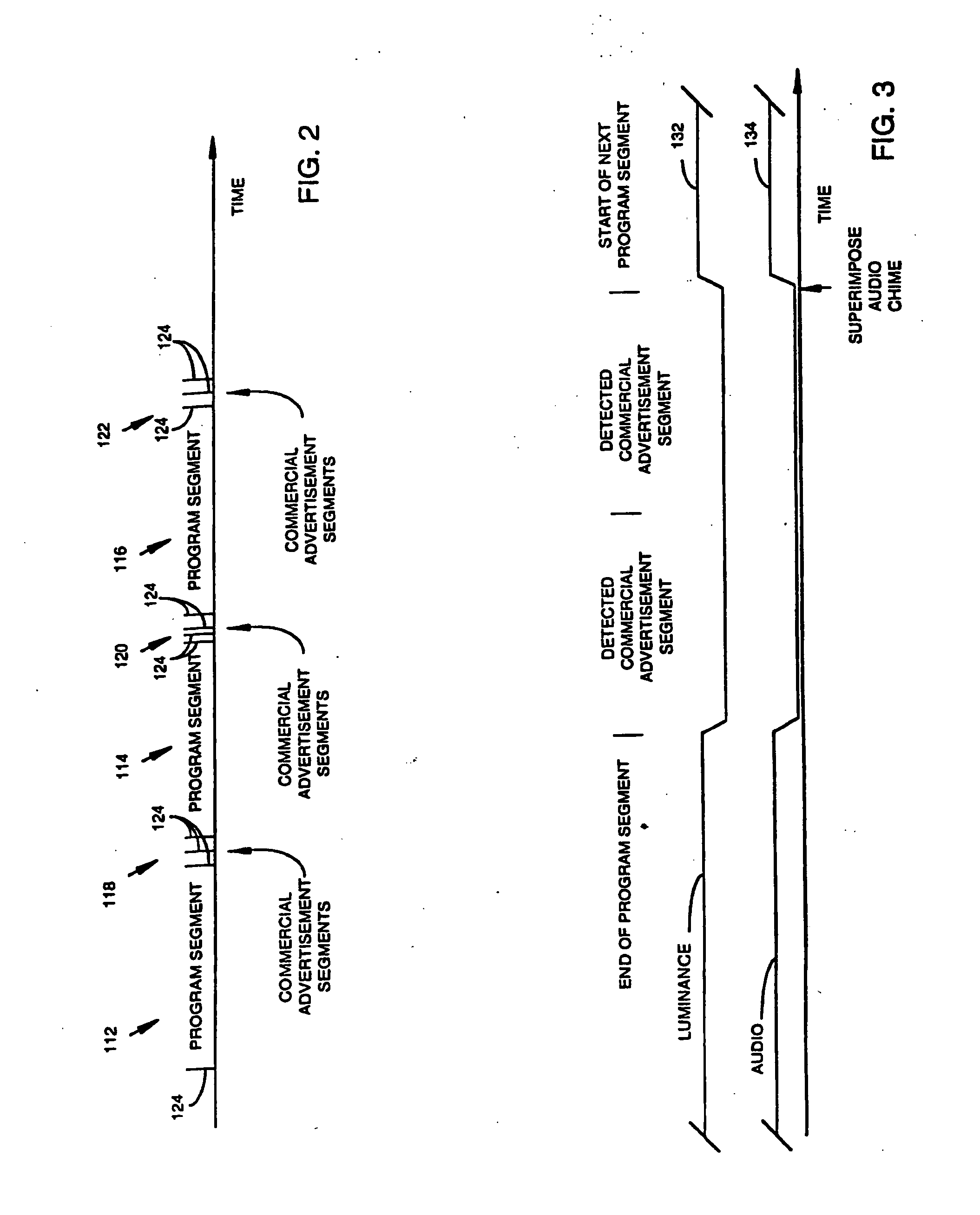Method and apparatus for selectively altering a televised video signal in real-time
a real-time, televised video technology, applied in the direction of broadcast information monitoring, selective content distribution, television systems, etc., can solve the problems of system not operating in real-time during a received broadcast, system not operating in real-time to detect commercial advertisements within a received broadcast signal, and insufficiently effective and economical systems that automatically operate in real-time for muting
- Summary
- Abstract
- Description
- Claims
- Application Information
AI Technical Summary
Benefits of technology
Problems solved by technology
Method used
Image
Examples
Embodiment Construction
[0042] Referring to the Figures, exemplary embodiments of the invention are described for use with a television set for detecting “unwanted segments”, such as commercial advertisements, in a television broadcast signal. Unwanted segments may also include other segments designated by a viewer, such as segments that may be deemed by a parent to be inappropriate for viewing by children. Upon detection of an unwanted segment, the audio and video components of the received broadcast signal may be muted. Alternatively, a secondary signal source may be substituted for viewing during the unwanted segment. Initially, an overview is provided with reference to the block diagrams and timing diagrams of FIGS. 1-7. Then, further details of particular implementations are provided with reference to the flowcharts and block diagrams of FIGS. 8-19.
[0043]FIG. 1 illustrates a television set 100 having a receiver 102 and a monitor 104. Television receiver 102, which includes a television tuner, receive...
PUM
 Login to View More
Login to View More Abstract
Description
Claims
Application Information
 Login to View More
Login to View More - R&D
- Intellectual Property
- Life Sciences
- Materials
- Tech Scout
- Unparalleled Data Quality
- Higher Quality Content
- 60% Fewer Hallucinations
Browse by: Latest US Patents, China's latest patents, Technical Efficacy Thesaurus, Application Domain, Technology Topic, Popular Technical Reports.
© 2025 PatSnap. All rights reserved.Legal|Privacy policy|Modern Slavery Act Transparency Statement|Sitemap|About US| Contact US: help@patsnap.com



